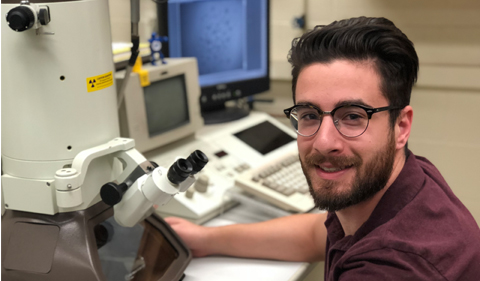By Ari Blumer ’18 B.S. Engineering Physics, Honors Tutorial College
Electrochemical supercapacitors typically store 10 to 100 times more energy per unit than electrolytic capacitors. They utilize the energy-storing mechanisms found in traditional capacitors and batteries, bringing them both into one device using an ionic electrolyte and a high-surface-area electrode material.
Supercapacitors have the potential to significantly contributing to the energy industry, especially by smoothing out power delivery for intermittent energy sources.
My research involves testing monolayer molybdenum disulphide (MoS2) and carbon quantum dots as potential materials to be used in a supercapacitor. There are two ways to improve these capacitors, MoS2 increases the surface area, while the carbon quantum dots ensure that there is electrical conductivity between the MoS2 flakes.
I’m fortunate to have the help from two professors for my project, ‘Monolayer MoS2 Flakes and Carbon Nano Dots as Supercapacitor Electrode Materials’. Russ College of Engineering and Technology Assistant Professor Dr. John Staser has helped me to understand the electrochemical application side of things, while Dr. Martin Kordesch, a Professor in Physics and Astronomy, has helped me with learning about the material itself and its physical attributes.
I have learned quite a lot so far in my research, but most significant is that MoS2 participates in pseudocapacitive processes, which confirms that the addition of Mos2 and carbon quantum dots to supercapacitors is worthy of further investigation.
This work is interesting to me because I am able to apply my love for physics and research to my passion for energy and environmental sustainability. Furthering supercapacitor and energy storage technology will allow for further incorporation of renewable sources into the grid. In addition, the quantum dots we’re using are made from coal dust, a waste product that can be put to valuable use.
This April Blumer will present his research at the 2018 Materials Research Society (MRS) Spring Meeting & Exhibit taking place in Phoenix, Arizona.




















Comments